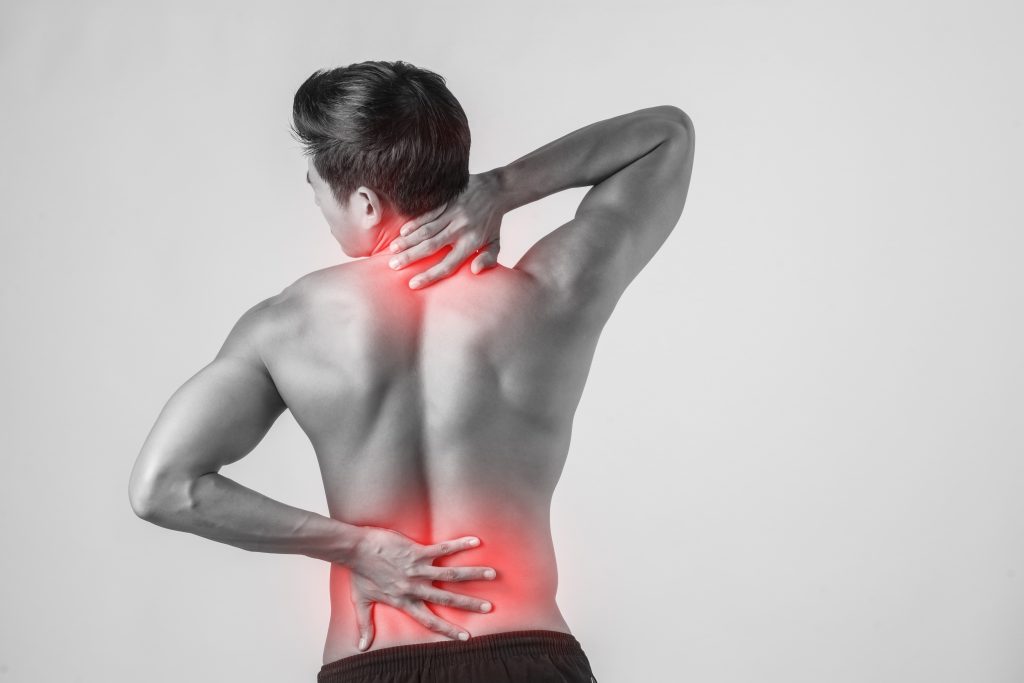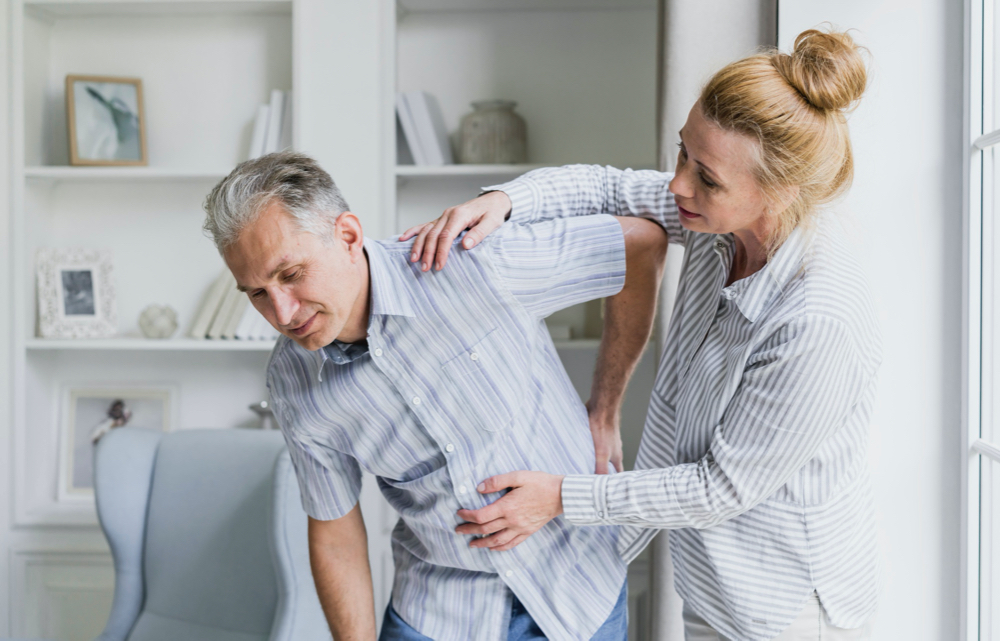- Fast results
- 4,000+ locations
- 4.8 star rating
Need Help? (888) GET LABS



After hours of sitting and working on your desk, there’s a good chance that you’ll succumb to low back pain. This would be the case, especially if you lack lumbar support in your chair.
However, poor posture and lengthy sitting time are not the only culprits for this condition.
Low back pain can also indicate health conditions like arthritis, fibromyalgia, herniated disk, and more. Temporary remedies are available, but they may not be enough to make your back pain go away completely. In this sense, you will need a proper diagnosis.
It’s imperative to take low back pain seriously, especially if it’s chronic. According to a study published in The Lancet, untreated low back pain can lead to disability.
If you’re wondering how to treat your low back pain properly, simply read on to learn about the details.
The discomfort typically radiates from the lumbar region of your spine, which you can distinguish through its slight outward curvature.
The lumbar spine also carries the weight of your upper body. So, without frequent movement or prolonged sitting, the weight causes pressure leading to inflammation.
In the same way, the muscles surrounding the spine can get affected by the sudden use of force when doing something mechanical. For example, you may experience lumbar spine pain if you lift heavy objects with your back.
Likewise, nerve damage and inflammation caused by medical conditions can result in chronic low back pain.
Muscle strain caused by excessive pressure in the lumbar spine is often considered the usual cause of low back pain. However, the following conditions could also be the reason:
Your spinal column comprises several bones that go on top of the other. They are divided into regions based on their position, with the cervical spine on top followed by the thoracic, lumbar, sacrum, and coccyx.
The bones contain disks in between to act as cushions against pressure caused by various activities of the day. The disk has a soft inner part and a sturdy outer ring.
It is called a herniated disk when the inner portion pushes out of the outer ring due to injuries or weakness. This causes pain and discomfort depending on which region is affected.
A herniated disk is diagnosed through imaging tests such as an X-ray, MRI, and CT scan.
Treating a herniated disk depends on its severity and the degree of pain you experience. For mild conditions, there’s a chance that it can go away on its own with sufficient rest, heat or cold application, and over-the-counter pain relievers.
On the other hand, if the herniated disk pain persists, your doctor may prescribe you anti-inflammatory medication, an exercise program or physical therapy, and epidural injection. Surgery can also be an option, but it’s rarely the case.
Spinal stenosis occurs when spaces between the bones in your spine become compressed, causing more pressure to the spinal nerves. You can experience low back pain when the condition affects the lumbar spine – a condition known as lumbar stenosis.
Osteoarthritis is considered the most common cause of spinal stenosis. This condition is characterized by the wear and tear in the protective cartilage of the joints and spinal bone.
On the other hand, you can also experience lumbar stenosis due to rheumatoid arthritis, spinal injury, and tumors.
Lumbar stenosis and osteoarthritis can be diagnosed through MRI, CT myelogram, and X-ray.
Meanwhile, your doctor may also order blood tests to help confirm rheumatoid arthritis and rule out osteoarthritis. So with that, you could take the rheumatoid factor blood test.
Treating lumbar stenosis depends on what causes it. It can range from steroidal medication physical therapy to surgery for severe cases.
People with fibromyalgia experience body pain more often than those who don’t have the condition.
Most of the parts that get inflamed are those frequently used, such as hands, neck, and upper body. This also includes your lower back considering your lumbar spine receives pressure from daily activities like sitting.
Clinical tests are still in the works for fibromyalgia. Therefore, there are no lab tests that can isolate the condition yet. Instead, your physician may use established guidelines for fibromyalgia diagnosis.
Nonetheless, your doctor would most likely order blood tests to rule out other conditions like arthritis.
Your doctor will prescribe medications for pain if you’re diagnosed with fibromyalgia. Likewise, you may also need to take anti-depressants and anti-seizure medicines.
Osteoporosis is a disease wherein the bones weaken and become brittle, making them more prone to breaking. Although men can also develop the condition, it primarily affects women due to their smaller frame.
It is also common for women to develop deformed spine (hyperkyphosis) when they have osteoporosis. This results in the formation of a hunch and frequent low back pain.
Since osteoporosis doesn’t often show symptoms until a bone breaks, it is dubbed a silent disease. Fortunately, you can get ahead of the condition by getting screened for bone weakness through osteoporosis blood tests.
A bone density scan is performed to detect osteoporosis by measuring your bone mineral density. This is typically done through bone densitometry or DEXA (dual-energy X-ray absorptiometry) scan.
Those diagnosed with osteoporosis are prescribed bone-building medications. Plus, they are advised to take vitamin and mineral supplements as well as regular exercise.

Pain in your low back spine may reduce your productivity, but you can employ relief through practical remedies. Likewise, you can consider these actions as preventive measures to lessen back pain entirely.
Taking warm baths or applying heated pads to your lower back can ease the pain.
Heat allows the blood vessel to dilate, increasing the blood flow rate. This improves blood circulation, which reduces inflammation and swelling in the lumbar region. Also, warm baths and pads promote tissue healing.
Likewise, heat soothes the affected muscles and joints by clearing out lactic acid, which builds up when you experience muscular strains and spasms.
Static posture leads to buildup pressure. This is why prolonged sitting leads to low back pain, especially among those who work in an office or at home.
Fortunately, you can maintain a good posture while working with an ergonomic chair. In addition, you can reduce back and neck pain considering this chair promotes good posture and blood circulation through sufficient support and padding.
Plus, it allows a neutral position for your joints while reducing hip pressure. Overall, an ergonomic chair helps prevent musculoskeletal disorders and other related conditions.
Regular exercise allows your bones and muscles to decompress. For example, if you do yoga, several positions can stabilize your spine and relieve the pressure between the lumbar disks.
Moreover, research supported the benefits of yoga against chronic low back pain. According to several studies, yoga is an effective and affordable alternative to expensive lumbar pain treatments.
In addition to yoga, you can also spend 10 to 15 minutes of exercise designed to relieve low back pain. For example, you can perform partial crunches, pelvic tilts, bridging, lower back rotational stretches, draw-in maneuvers, and wall sits.
Nevertheless, if you experience chronic back pain, consult your doctor about the appropriate exercises you should do.
A proper massage relieves pain effectively by improving your blood circulation and releasing the lactic acid accumulated in the lumbar region.
The American College of Physicians even includes massage therapy as one of the treatment options for acute back pain. This is referenced in their clinical practice guidelines.
Moreover, it releases endorphins from the brain, which are the body’s natural painkillers. With that, getting a massage also provides stress relief.
While it may seem as if anyone can perform back massages, it’s still best to seek professional services to avoid unwanted side effects. Although it is rare, there’s still a chance that improper massage done with too much pressure can lead to blood clots, bone fracture, and nerve injury.
Over-the-counter pain relievers remain reliable in reducing pain. Hence, if you’re after quick relief, you can take medications available in drug stores or pharmacies.
OTC pain relievers don’t require prescriptions. However, you are still advised to follow the recommended intake and frequency.
On the other hand, you can also go for a pain-relief cream. These creams usually have menthol that numbs the pain along with other analgesic ingredients that reduce inflammation.
Back pain, particularly the one radiating from your lumbar, may seem like a tolerable condition, especially if it comes and goes. Home remedies often do the trick in making it go away.
However, relying too much on these quick relief solutions could overshadow serious medical conditions which cause the pain, to begin with.
Therefore, it’s still crucial to see your doctor, especially if the lumbar spine pain happens frequently and to a progressive degree. By doing so, you get the proper diagnosis and treatment you need for long-term pain relief.

© Copyright 2025 Personalabs. All Rights Reserved.